
- Self-Study Guided Program o Notes o Tests o Videos o Action Plan

North Eastern Region Community Resource Management Society (NERCRMS) is a registered society under the aegis of North Eastern Council, Ministry of Development of North Eastern Region. The society is dedicated towards the transformation of far flung rural areas of North Eastern Region (NER)of India through different livelihood initiatives. The society, so far has covered four states of NER viz. Arunachal Pradesh (Changlang, Tirap andLongdingdistricts), Assam KarbiAnglongand DimaHasaodistricts), Manipur (Ukhrul, Senapati, Churachandpur andChandeldistricts) and Meghalaya (West Garo Hills and West Khasi Hills districts). The society, since 1999, has formed 8,403 SHGs (Self Help Groups) and 2,889 NaRMGs (Natural Resource Management Groups) in 2,532 villages benefiting 1,18,843 households through its project-North Eastern Region Community Resource Management Project (NERCORMP).
The overall objective of the project is to “To improve the livelihoods of vulnerable groups in a sustainable manner through improved management of their resource base in a way that contributes to preservation and restoration of the environment”.
The society adopted a holistic approach of development with two broad focus areas i.e. (i) social mobilization, organization and capacity building to tap and realize the great latent potential of the communities by employing time tested their traditional value systems and culture, and (ii) Intervene with the economic and social activities and infrastructure with predominant thrust on income generating activities to achieve economic transformation.
The strategy adopted to achieve the goals is:
Waves of transformation in North Eastern Region of India
Phase
Project Villages
Households
NaRMGs
SHGs
NERCORMP - I
860
39161
1012
3168
NERCORMP - II
460
20826
494
1589
NERCORMP - III
1212
58856
1383
3646
Total
2532
118843
2889
8403
Meghalaya and Manipur
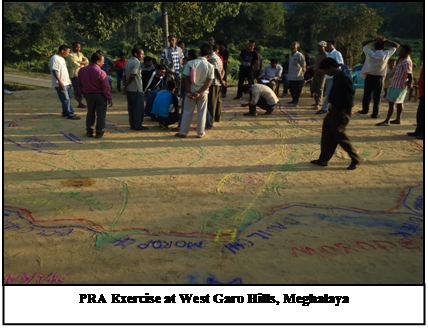
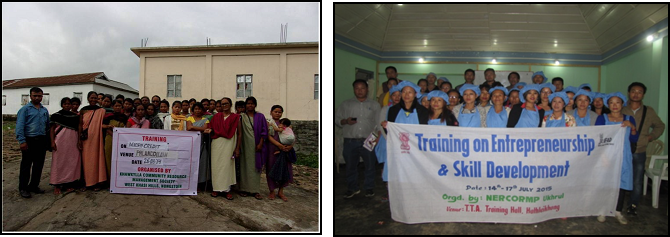
Meghalaya
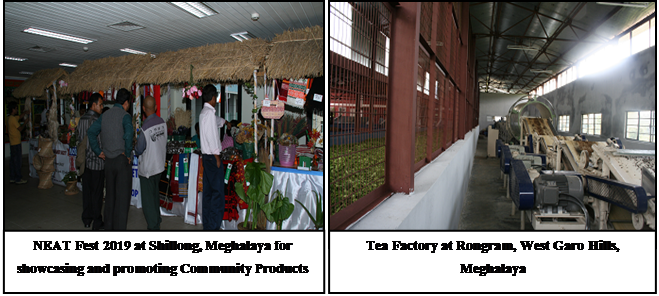
Assam

Manipur
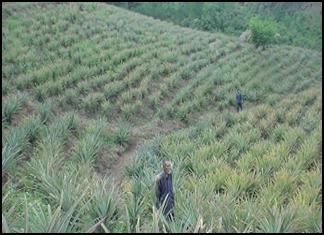
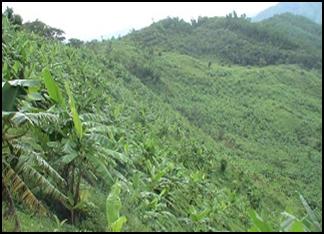

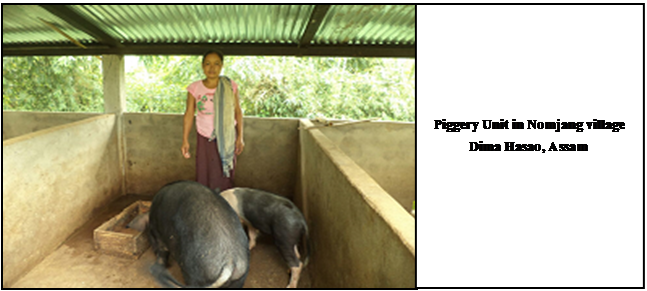
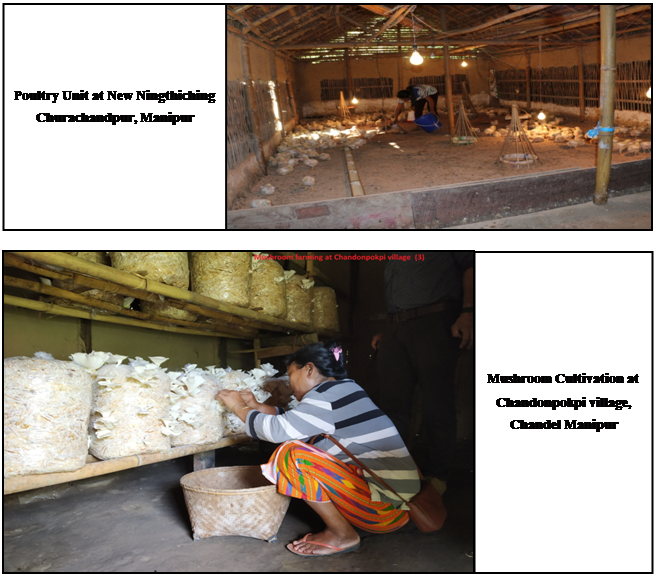
Arunachal Pradesh
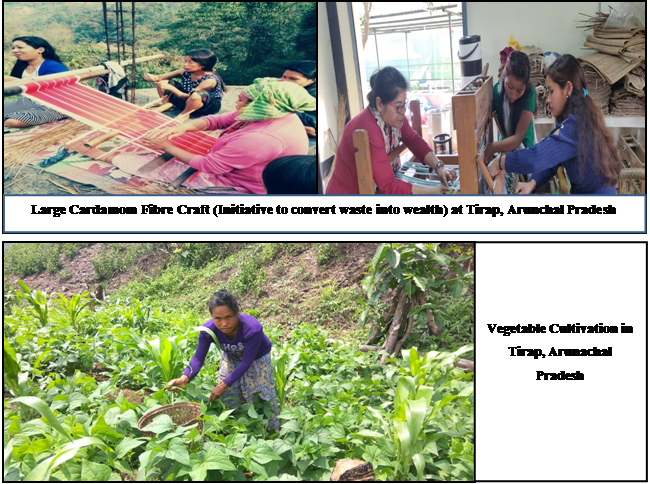
thiscomponentwas toprovidecommunitiesaccess tosafedrinkingwaterandimproved sanitation.
Thiswas tobe achievedby constructingdrinkingwaterstoragetanks,pipedsupplyofwaterfromanearby
spring orstreamandconstructionof lowcosttoilets(LCL)withcommunity participation.
Manipur
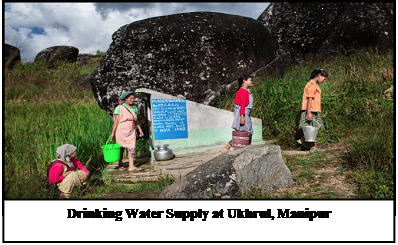
Meghalaya
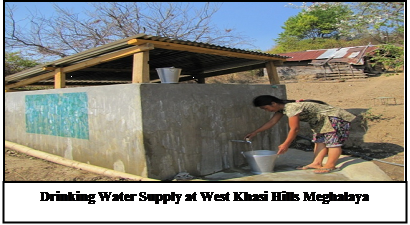
Manipur
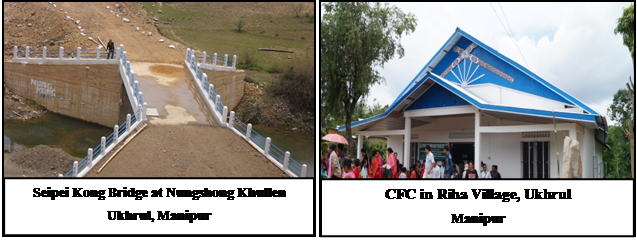
Assam
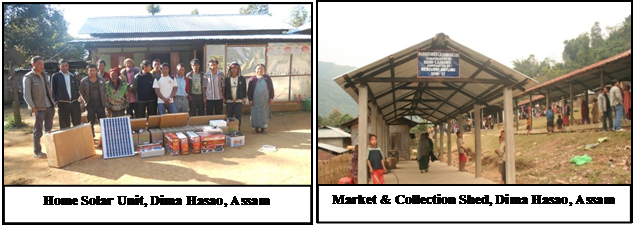
Meghalaya
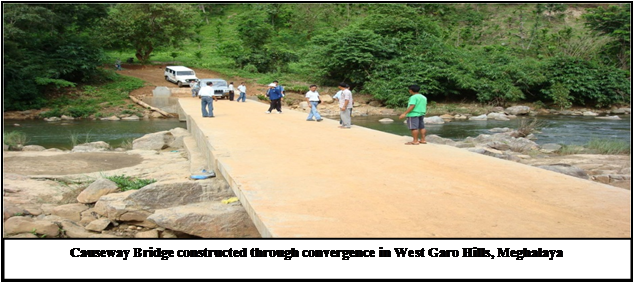
v) Community-basedBio-diversityConservation & Communication:The specificobjectiveis toprotectandpreserve theuniquenaturalresources andrichbio-diversityoftheregion.Thesub-componentstoachievethis objectivewere:(i)bio-diversity conservationand researchaimed at promotingcommunityconserved areas(CCAs)assacred groves,
protectedcatchmentareasandsanctuaries,(ii)forestrydevelopmenttopromoteand demonstrate environmentally sustainable non-timber forest products (NTFP)and forestry production systems, and
(iii)communication and knowledge management to facilitate information and knowledge sharing on good practicesand production systems betweencommunities.
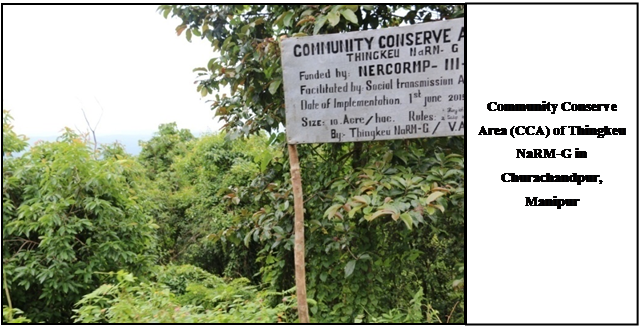
*******
MG/RNM
North Eastern Region Community Resource Management Society (NERCRMS) is a registered society under the aegis of North Eastern Council, Ministry of Development of North Eastern Region. The society is dedicated towards the transformation of far flung rural areas of North Eastern Region (NER)of India through different livelihood initiatives. The society, so far has covered four states of NER viz. Arunachal Pradesh (Changlang, Tirap andLongdingdistricts), Assam KarbiAnglongand DimaHasaodistricts), Manipur (Ukhrul, Senapati, Churachandpur andChandeldistricts) and Meghalaya (West Garo Hills and West Khasi Hills districts). The society, since 1999, has formed 8,403 SHGs (Self Help Groups) and 2,889 NaRMGs (Natural Resource Management Groups) in 2,532 villages benefiting 1,18,843 households through its project-North Eastern Region Community Resource Management Project (NERCORMP).
The overall objective of the project is to “To improve the livelihoods of vulnerable groups in a sustainable manner through improved management of their resource base in a way that contributes to preservation and restoration of the environment”.
The society adopted a holistic approach of development with two broad focus areas i.e. (i) social mobilization, organization and capacity building to tap and realize the great latent potential of the communities by employing time tested their traditional value systems and culture, and (ii) Intervene with the economic and social activities and infrastructure with predominant thrust on income generating activities to achieve economic transformation.
The strategy adopted to achieve the goals is:
Waves of transformation in North Eastern Region of India
Phase
Project Villages
Households
NaRMGs
SHGs
NERCORMP - I
860
39161
1012
3168
NERCORMP - II
460
20826
494
1589
NERCORMP - III
1212
58856
1383
3646
Total
2532
118843
2889
8403
Meghalaya and Manipur


Meghalaya

Assam

Manipur





Arunachal Pradesh

thiscomponentwas toprovidecommunitiesaccess tosafedrinkingwaterandimproved sanitation.
Thiswas tobe achievedby constructingdrinkingwaterstoragetanks,pipedsupplyofwaterfromanearby
spring orstreamandconstructionof lowcosttoilets(LCL)withcommunity participation.
Manipur

Meghalaya

Manipur

Assam

Meghalaya

v) Community-basedBio-diversityConservation & Communication:The specificobjectiveis toprotectandpreserve theuniquenaturalresources andrichbio-diversityoftheregion.Thesub-componentstoachievethis objectivewere:(i)bio-diversity conservationand researchaimed at promotingcommunityconserved areas(CCAs)assacred groves,
protectedcatchmentareasandsanctuaries,(ii)forestrydevelopmenttopromoteand demonstrate environmentally sustainable non-timber forest products (NTFP)and forestry production systems, and
(iii)communication and knowledge management to facilitate information and knowledge sharing on good practicesand production systems betweencommunities.

*******
MG/RNM